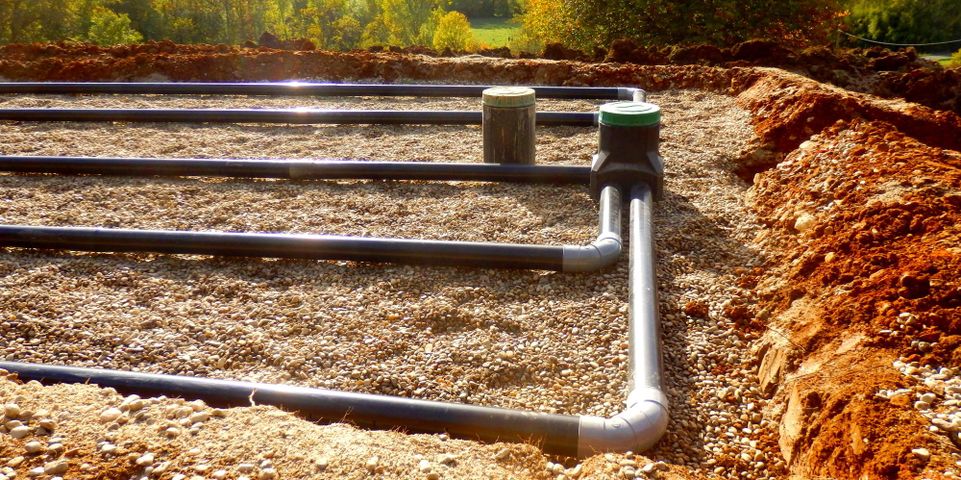5 Standard Components of a Residential Septic System

When maintained properly, a septic system offers a safe and sustainable solution for non-municipal sewage. Put simply, these resources are designed to collect waste from a house, break down its harmful components, and safely redistribute it to the land. While these systems will usually run like clockwork, homeowners need to understand the ins-and-outs of septic equipment so that they can identify and resolve potential problems in a timely fashion with the help of a qualified plumbing contractor. If you’re new to the concept, here’s a brief review of septic system components, where they are located, and what they do.
A Guide to Your Septic System
1. Plumbing Vent
The plumbing vent is typically a vertical pipe that extends out the top of the home through the roof. This vent’s only purpose is to allow air into the sewage line so that the internal pressure can effectively move waste out toward the tank.
2. Sewage Line
The sewage line refers to the pipes that all waste matter exits the home through. Depending on your home’s configuration, you may have one or more lines throughout the home that converge to efficiently direct waste toward the tank.
3. Septic Tank
 Typically buried beneath the ground outside of the home, the septic tank is the heart of the waste removal system. When waste passes from the sewage line into the tank, solid waste will sink to the bottom while lighter materials—or scum—will rise to the top. This matter remains in the compartment until it is broken down by natural bacteria. However, as sludge collects, it will eventually need to be pumped out by a plumbing contractor to prevent backups.
Typically buried beneath the ground outside of the home, the septic tank is the heart of the waste removal system. When waste passes from the sewage line into the tank, solid waste will sink to the bottom while lighter materials—or scum—will rise to the top. This matter remains in the compartment until it is broken down by natural bacteria. However, as sludge collects, it will eventually need to be pumped out by a plumbing contractor to prevent backups.
As this matter breaks down, safe wastewater—or effluent—passes through a baffle into a secondary compartment of the septic tank. This compartment connects to a pipe that leads to the rest of the sewage drainage system.
4. Distribution Box
Many septic systems feature a distribution box where effluent is directed to different areas of the drainfield. The purpose of the distribution box is to ensure that wastewater is evenly spread throughout the drainfield to help prevent backups.
5. Drainfield
The distribution box connects to a series of perforated pipes that allow effluent to enter the soil. This area is known as the drainfield. Drainfields are typically comprised of sand and gravel that work together to filter the matter as it returns to the environment for safe absorption.
Maintaining a septic system and its many components is easy when you have the support of Charles Chester Plumbing & Heating,Inc (License #7377). Serving residential and commercial clients in the Elko, NV, region for more than five decades, They offer pumping services to ensure your private sewage system maintains safe and effective waste processing. Visit this licensed contractor online for more details about their maintenance, emergency plumbing, and HVAC repair services. For estimates or service requests, call (775) 738-6125.
About the Business
Have a question? Ask the experts!
Send your question

